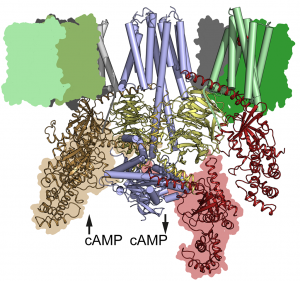 Reviews To Read – September 2021.
Reviews To Read – September 2021.
Published in Pharmacology & Therapeutics by Sergi Ferré, et al.
G protein-coupled receptors (GPCRs) are the largest group of receptors involved in cellular signaling across the plasma membrane and a major class of drug targets. The canonical model for GPCR signaling involves three components — the GPCR, a heterotrimeric G protein and a proximal plasma membrane effector — that have been generally thought to be freely mobile molecules able to interact by ‘collision coupling’. Here, we synthesize evidence that supports the existence of GPCR–effector macromolecular membrane assemblies (GEMMAs) comprised of specific GPCRs, G proteins, plasma membrane effector molecules and other associated transmembrane proteins that are pre-assembled prior to receptor activation by agonists, which then leads to subsequent rearrangement of the GEMMA components. The GEMMA concept offers an alternative and complementary model to the canonical collision-coupling model, allowing more efficient interactions between specific signaling components, as well as the integration of the concept of GPCR oligomerization as well as GPCR interactions with orphan receptors, truncated GPCRs and other membrane-localized GPCR-associated proteins. Collision-coupling and pre-assembled mechanisms are not exclusive and likely both operate in the cell, providing a spectrum of signaling modalities which explains the differential properties of multitude of GPCRs in their different cellular environments. Here, we explore the unique pharmacological characteristics of individual GEMMAs, which could provide new opportunities to therapeutically modulate GPCR signaling.
G protein-coupled receptor-effector macromolecular membrane assemblies (GEMMAs) Journal Article
In: Pharmacol Ther, pp. 107977, 2021, ISSN: 1879-016X.
